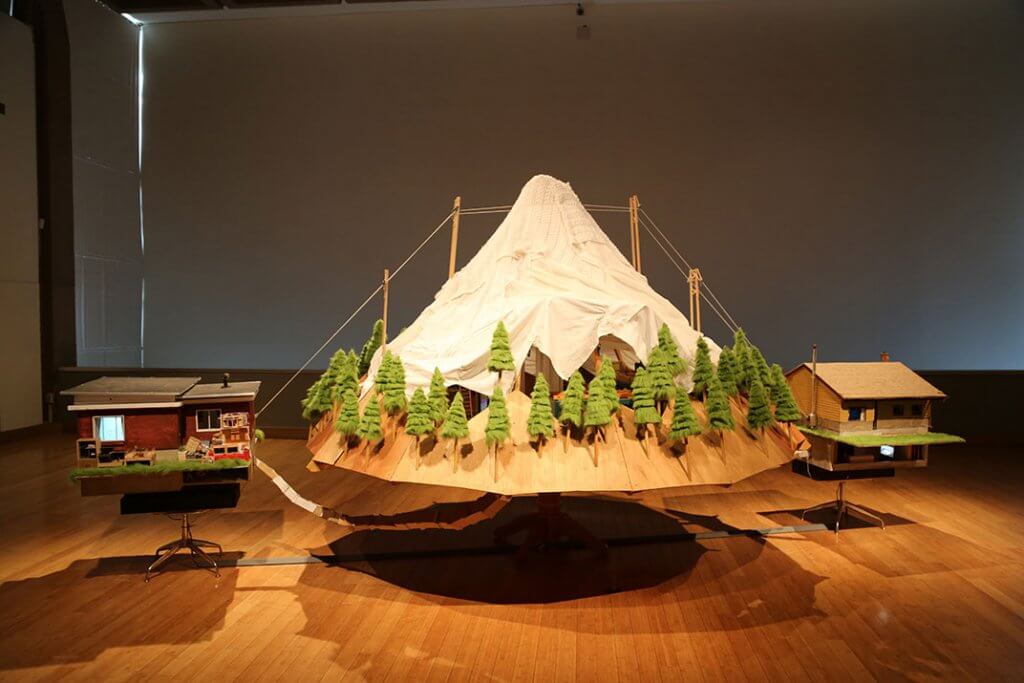
Secret Citadel is a place of friendship, both real and imagined. A thoughtful, mature and evocative study of male relationships, Patterson tells a story of two characters who embark on a series of bittersweet adventures. From childhood to adulthood, stages of life are conveyed in distinctive animated videos that accompany large sculptures containing highly detailed miniature worlds. Each of the sculptures reflects on a stage of life. Though Patterson focuses on male friendships, all viewers can relate to the subtleties and complexities inherent in close relationships. Figures of a bison and cougar stand in as Patterson and a lost childhood friend, as well as embody archetypal male friend figures. The animals are central characters in a deftly constructed narrative that is at times dark, melancholy, joyful and whimsical.
In The Mountain, the childhood homes of the young friends are recreated. Viewers can peer inside tiny windows to see rooms decorated as Patterson remembers them from the 1980s, with furniture and flooring made from tiny Popsicle sticks, and scraps of fabric used for carpet and curtains. In Grudge Match, comprised of a set of gymnasium bleachers, a wrestling match between the human avatars of the central figures is played out in the projection. Viewers are invited to sit on the first three rows of the bleachers to watch the animation. Two charred bunk beds are joined to form Camp Wakonda, which is populated with dramatic scenes from Patterson’s memory and imagination, including an automobile crash and projected flames. Player Piano Waltz is housed in a modified player piano that plays Patterson’s own composition when viewers deposit a dollar coin. Atop the piano is a model men’s club in which the bison and cougar now play out the final scene of the narrative, settled into separate lonely routines amidst the pastimes of adulthood. The feature animation, Secret Citadel, is central to this coherent exhibition, providing the narrative thread that ties the sculptural works together. Evoking the vulnerabilities of friendship and of loneliness, love and loss, Secret Citadel provides viewers a place of reflection and discovery, affirming deeply human connections.
Graeme Patterson is the Atlantic finalist for the 2014 Sobey Art Award. He has won the Canada Council’s Victor Martyn Lynch-Staunton Award in Media Arts (2012) for outstanding mid-career artists. He graduated from the Nova Scotia College of Art and Design in 2002.
Secret Citadel is co-curated by Melissa Bennett and Sarah Fillmore, and organized by the Art Gallery of Hamilton and the Art Gallery of Nova Scotia.





